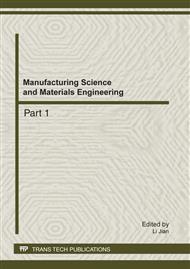p.684
p.688
p.694
p.700
p.705
p.709
p.713
p.719
p.724
Virtual Prototype Design of Remote-Control and Mobile Tea Table
Abstract:
Along with modern science and technology developing quickly, Remote control technology is in our life. The combination of machine and remote control technology is also bringing infinite fascination and convenience to our life. In the paper, remote control technology is applied to furniture-tea table, and making the tea table mobile according to hominine injunction. The whole figure of tea table is to apply motility element-sphere; the motion and swerve of tea table is to imitate structure of motorcar; in order to space saving, the worktable of tea table is to apply contact design.
Info:
Periodical:
Pages:
705-708
Citation:
Online since:
January 2012
Authors:
Price:
Сopyright:
© 2012 Trans Tech Publications Ltd. All Rights Reserved
Share:
Citation:


